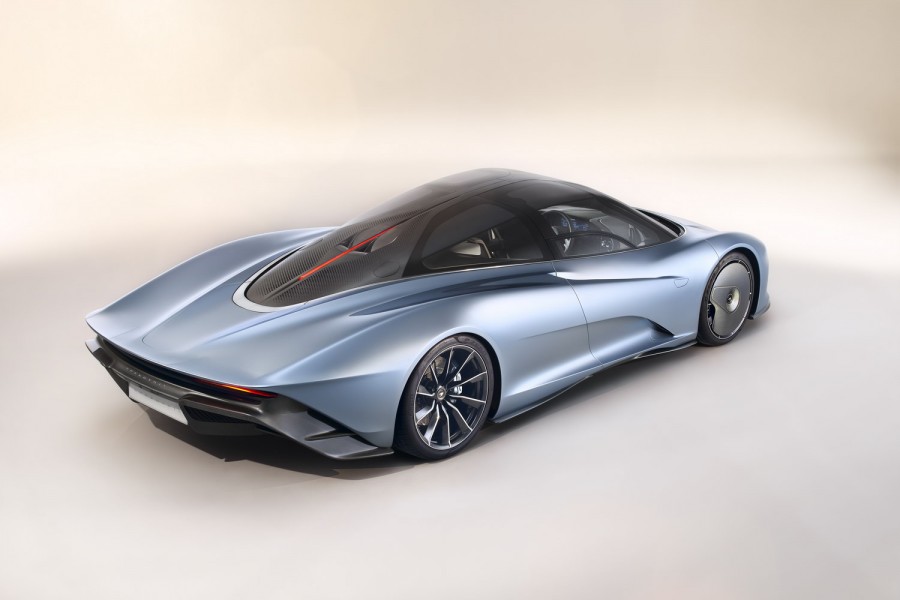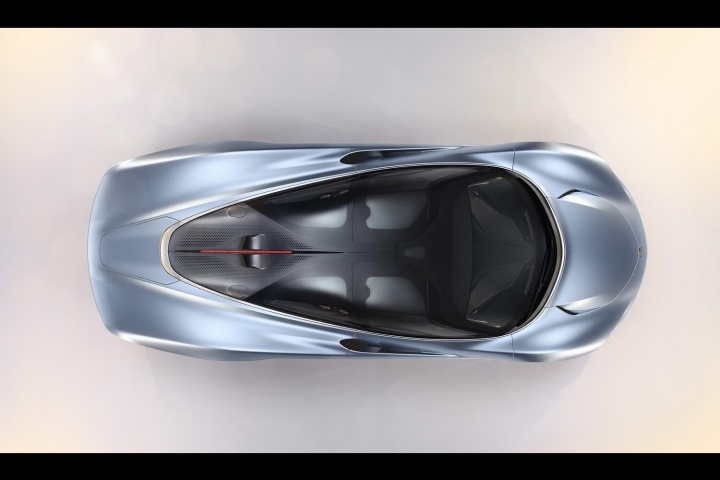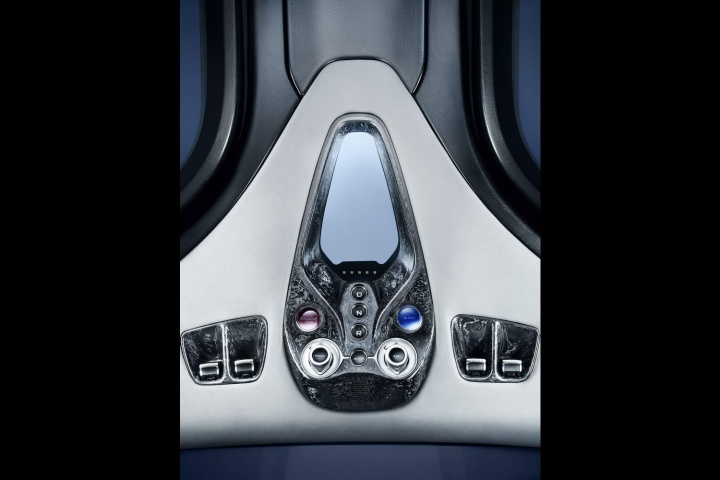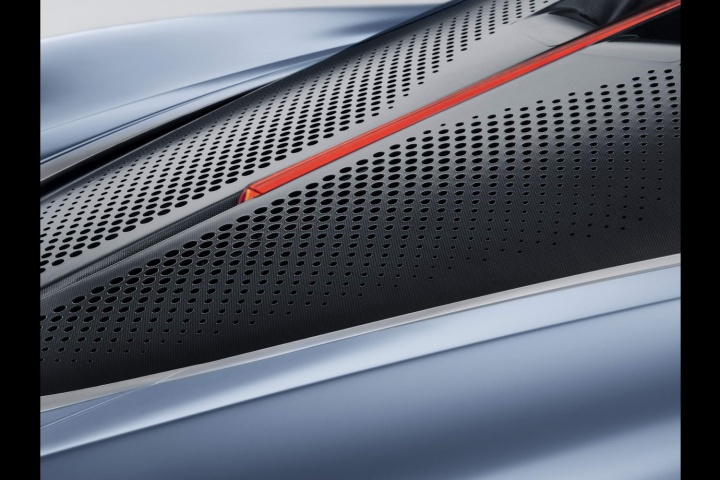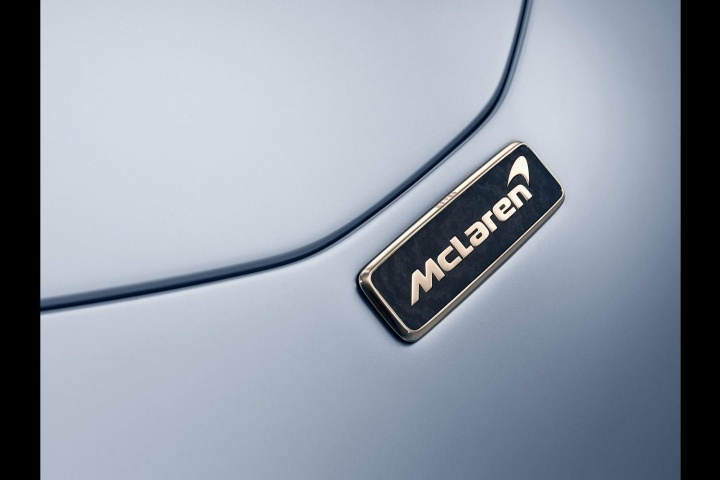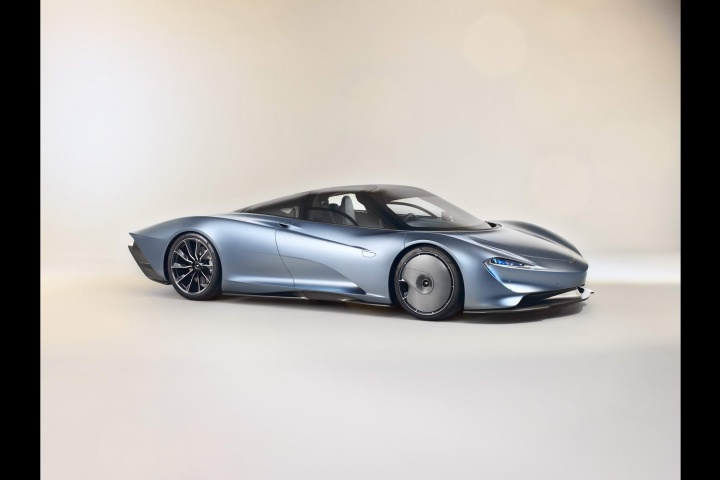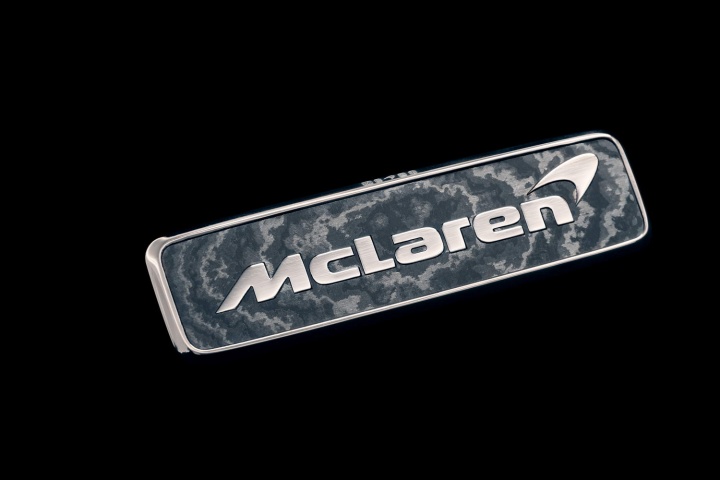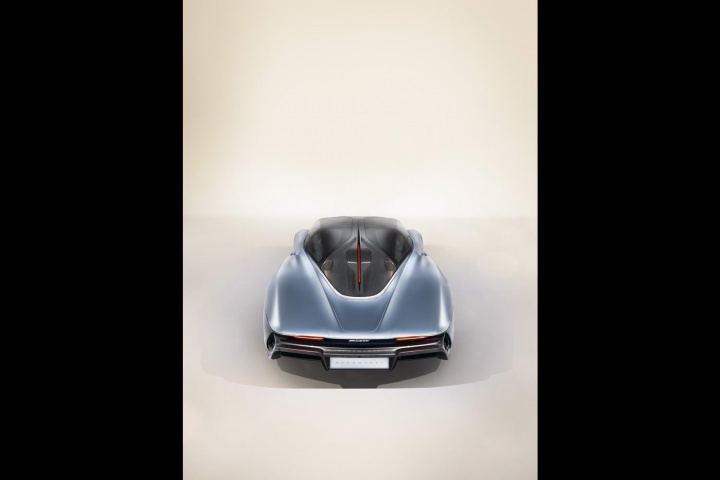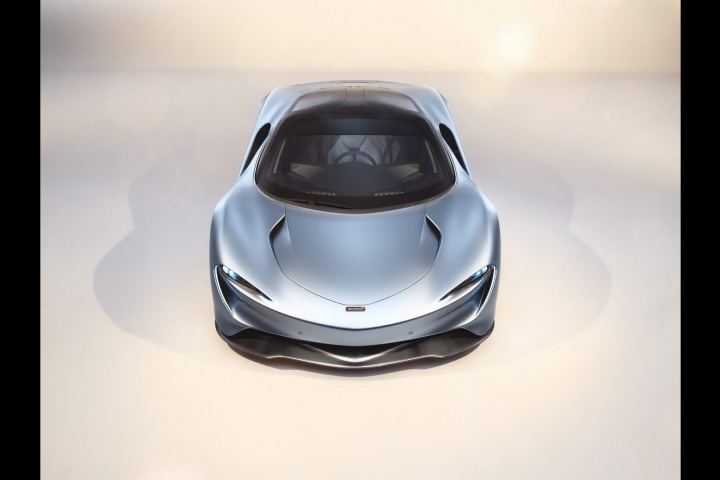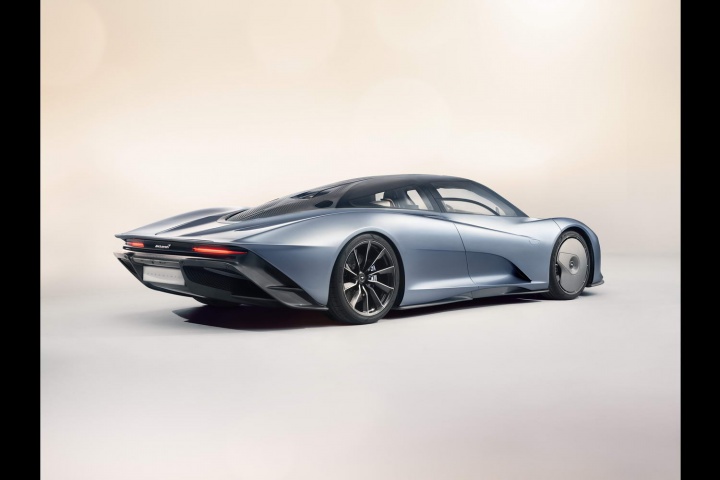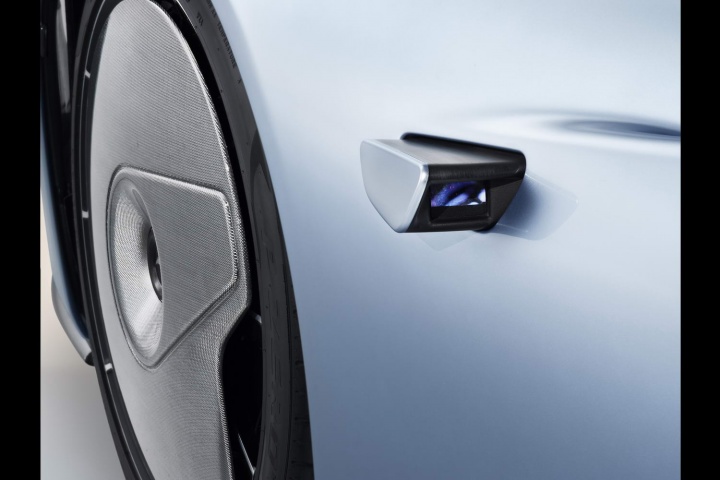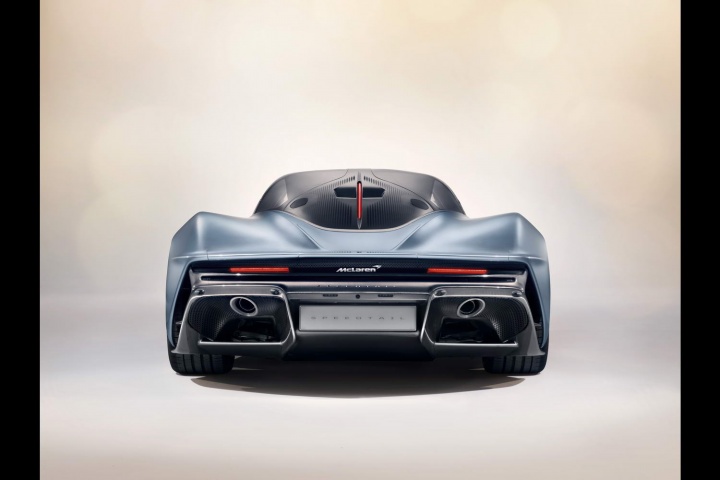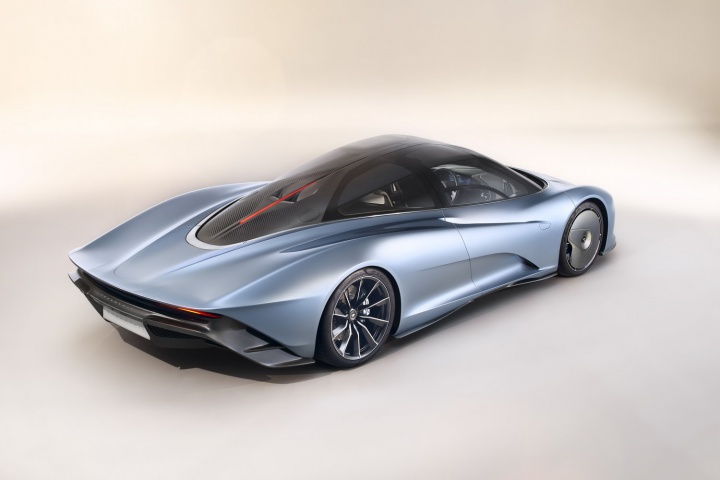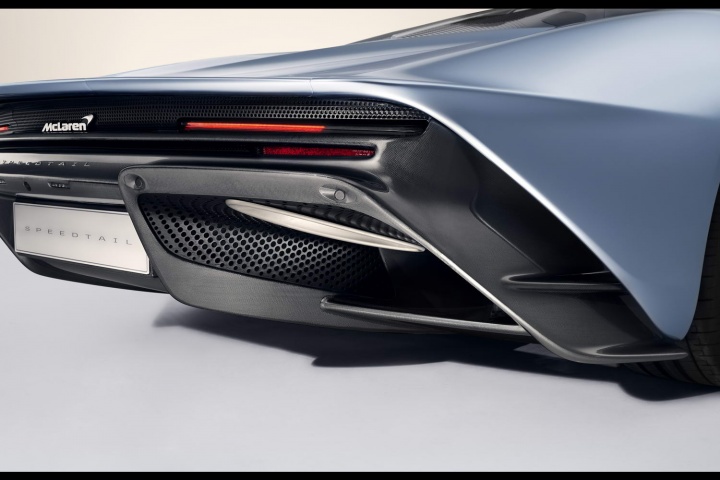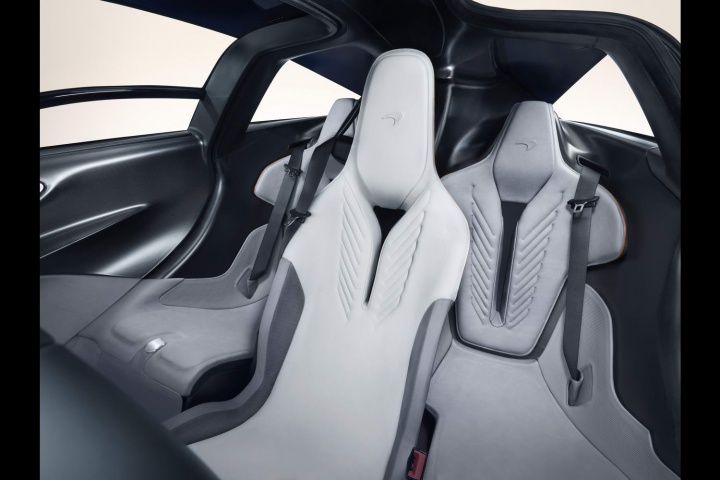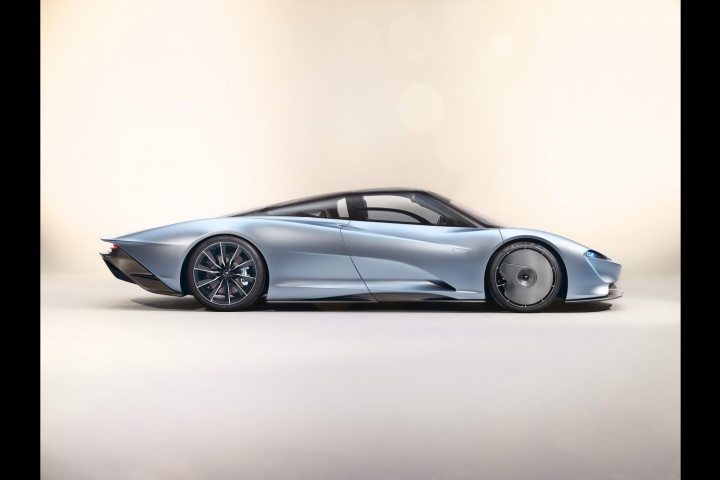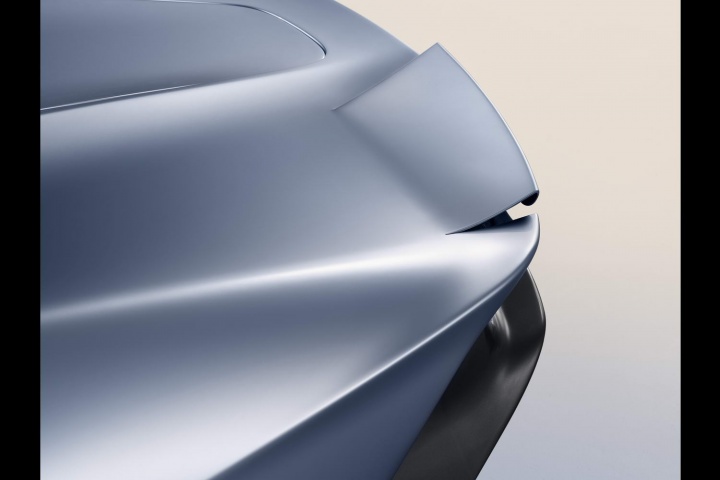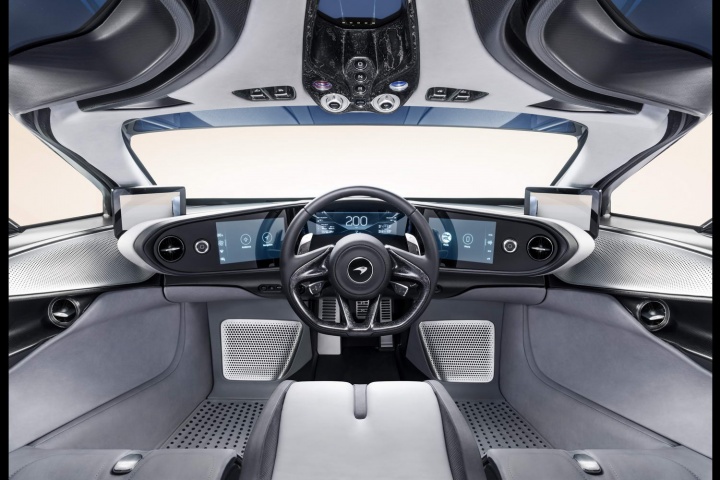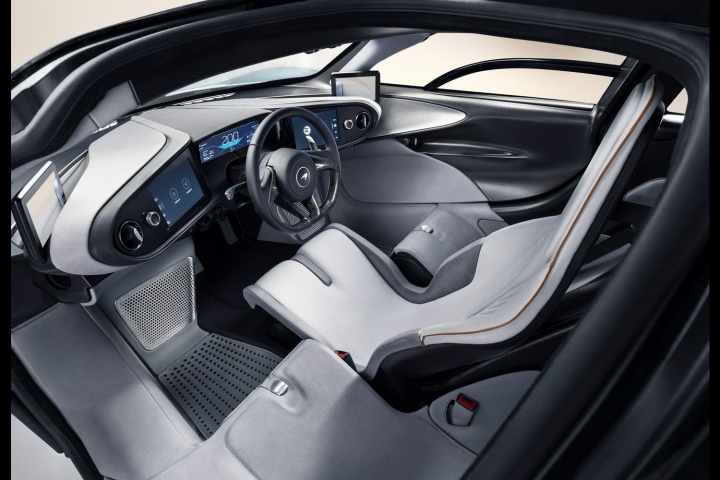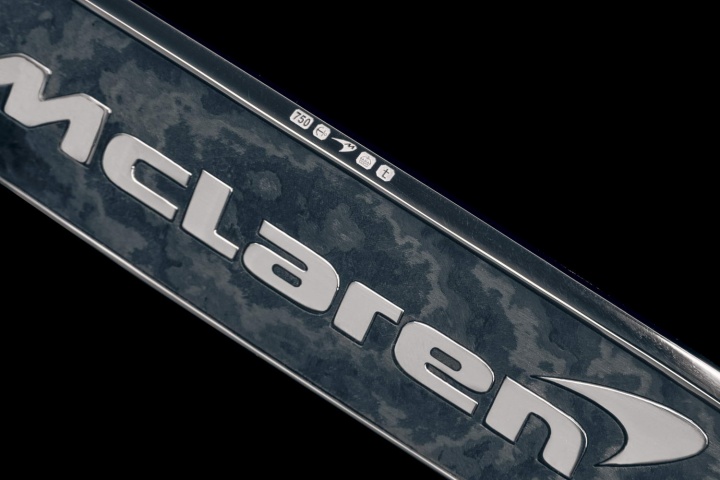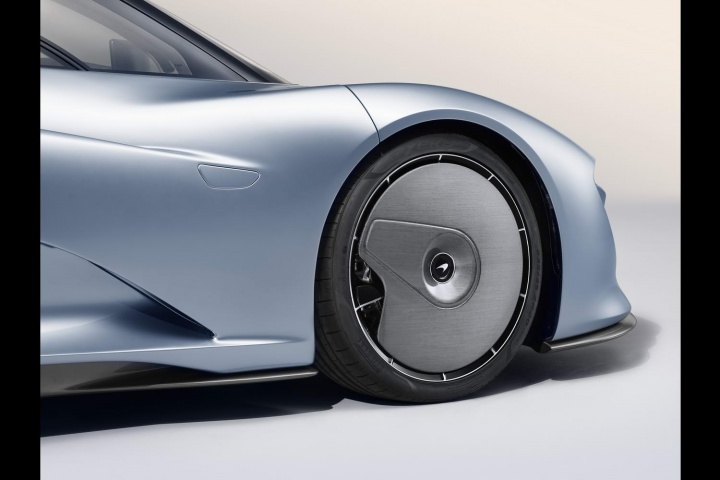What's the news?
If you were to take the legendary McLaren F1 and multiply it by 2013's incredible P1, you might come up with something as outlandish, amazing and downright desirable as the McLaren Speedtail. Just 106 lucky owners are going to get one of these things - the suspicion is they might well be getting one of the most extraordinary machines ever built by mankind.
Exterior
Drink in the glorious, sweeping, majestic bodywork of the Speedtail for a moment or two, and we'll let you have a few seconds of reflection... *quiet humming*... had enough of looking at it yet? No? That's all right, we fully understand... *more quiet humming*... OK then, we're really going to have to break your concentration now and tell you more about the McLaren.
So, that sensuous shape - unadorned as it is by obvious aerodynamic addenda, explained by McLaren Design Director Rob Melville, who said "every detail and volume on the car has earned its place: everything for a reason, no excess" - envelops a carbon-fibre Monocage II frame that is adapted, quite significantly, from the tub of the 720S. However, while the wheelbase of the Speedtail is just 50mm longer than the 720S's, the whole car is 594mm longer than the 720S at 5,137mm all-in, mainly because of that glorious rear. Said backside features the biggest carbon-fibre panel ever created by McLaren and also a pair of patent-pending ailerons, two small flaps of the carbon above those oh-so-slim-and-mean rear lights that can curve into the air to create downforce on the rear axle. Not as much downforce as you'd get on a McLaren Senna, mind, but then the Speedtail's active aero is quite a lot more discreet and elegant than the Senna's towering T-bar spoiler, eh?
The glasshouse is also a marvel, because it is almost entirely that, glass - like a fighter plane's cockpit - with only the minimum of support structures to block out the light. Electrically-powered butterfly doors carry huge panes of glass in them that meet in the middle of the roof, with chromatic strips and LEDs embedded in said glass that perform the duties of blocking out glare; there are no physical sun visors in the Speedtail, for instance. Small, opening 'ticket windows' feature at the bottom of the panes, as well, while the McLaren's exterior mirrors have been replaced with a rear-facing camera system that folds out of the doors.
Oh, and you might have noticed the wheel covers on the front 20-inch alloys, while the gorgeous rear 21s are exposed. Well, that's aero again; those front covers, solidly mounted on splines that go through the wheel hubs and offering around a 5mm tolerance to the alloys spinning behind them, actually help the car achieve its highest speeds. Owners can, if they so wish, remove them, but that would make the Speedtail's carefully-honed aerodynamics 'worse', says the team behind this remarkable vehicle.
Interior
Like the McLaren F1 of the 1990s, the hallmark of the Speedtail is a three-seat cabin, with the driver mounted front and centre, and then two passenger seats sitting aft and outboard of the key position. Aniline leather with specially designed, high-grip/low-slip fascia panels clothes all the seats, while the rear-most two chairs are actually shaped into the Monocage tub to maximise interior room. There are storage areas under each of them, too, plus two gloveboxes in the dashboard and two boots (one front, one rear) that can accommodate more than 160 litres of luggage. McLaren said this would be possible with 'four bags of bespoke luggage in the rear and one in the front.'
Facing the driver are three digital screens, representing a new interface for the McLaren infotainment and major controls. The centre screen presents road speed, engine revs and tyre pressures/temperatures, while satnav and climate, and then media and phone functions, are handled by the left and right displays, respectively. Secondary controls, for the lights and so on, are mounted lower down on the dashboard, but up above the driver's head are some of the key functions: engine start/stop, driving mode functions (there are just two on the Speedtail, as it's not designed as a track car - so choose between Comfort and Sport), traction control (brave is the person who switches this off, as we shall soon come to see...) - and a rather brilliant, somewhat enigmatic blue button marked VELOCITY. This drops the Speedtail by 35mm on its adaptive dampers, reducing the car's overall height to a measly 1,120mm, while also optimising the drivetrain and the active aero for 'maximum pace'.
Mechanicals
And so, to power. The McLaren has lots of it. Lots, and lots, and lots, and lots. Various details and numbers are still 'TBC', but the salient points are these: the Speedtail is a petrol-electric hybrid, rather like its P1 predecessor in the Ultimate Series, with the combustion side of things almost certainly going to be provided by a derivation of the 'M840T' 4.0-litre biturbo V8, as seen in the 720S and Senna. With its extensive use of carbon fibre, the dry kerb weight of the McLaren is 1,430kg... with the drivetrain's peak power rated at a thumping 1,050hp.
Thus, with a frankly preposterous 734hp/tonne, performance is, as you might expect from the Speedtail's name, brain-meltingly fast. We've been given but one acceleration figure, which is the car's 0-300km/h time... and it's a frightening 12.8 seconds. To put that into perspective, that's a whole 2.7 seconds quicker than a Volkswagen Polo 1.0 MPI would run 0- to just 100km/h; and, incredibly, it's 3.7 seconds faster than the mighty P1 took to do the same. The Speedtail's searing pace is therefore ridiculous.
All in, the Speedtail will run to 403km/h, which is 12km/h more than the official top speed of the McLaren F1, the company's previous record-holder. The suspicion is that McLaren could have squeezed even more kilometres per hour out of the Speedtail, but as its Pirelli P Zero tyres have to be as equally capable of whisking owners around in low-speed luxury and comfort as they are dealing with such ludicrous speed, 403km/h is it. We mean, we can't even believe we're suggesting that a car that can do 403km/h flat out is somehow lacking, but McLaren wouldn't confirm whether it was electronically limited to that speed or not...
Anything else?
On a rough calculation, and guessing that the Speedtail might have better (still to-be-confirmed) eco-figures than the P1, then the ballpark asking price for one of the 106 will be something like €2.85 million, plus local taxes. Gulp. Still, if you've not already got one, forget about it - because, even though production doesn't start until the end of 2019 ahead of first deliveries in 2020, they're all sold. Well, of course they are...

